The photographer was in the pale desert at dusk in early February, standing among hundreds of drooping Joshua trees, under the swiftly changing palate of the sky. He was trying to judge how the failing light would cast the picture he wanted of one tree in particular.
The photographer’s wife noticed he was getting cold, so she wrapped a blanket around his shoulders as he began to shiver in the dark. She rummaged in his bag and found the camera, a Sony A7, and unfolded the camera’s tripod on the dirt of the desert floor at Joshua Tree National Park. The photographer could no longer take pictures the way he used to; his arms dangled limply at his sides. He could not twist the lens to focus because of the atrophy in his hands, and didn’t have the strength to push his index finger into the shutter-release button when an image became perfect in his eye. He used to have several cameras, used to carry them on harnesses on his shoulders, used to be able to snap thousands of pictures in the span of a few hours.
The photographer, Anthony Carbajal, had just turned 28. He had a thick beard and short, tapered haircut, and such an optimistic disposition that it seemed his natural state, which could make him appear to have endless energy, though he was often tired. That morning his wife, Laarne Palec, also 28, helped him shower; helped him put on his pants and underwear; let him rest his arm on her shoulder in front of the bathroom mirror as she rolled deodorant under his armpits. Anthony, in the winter of 2016, could still hold some things. He could feed himself pizza and burritos, tacos and corndogs. He could, with some effort, strike the flint of a lighter to smoke prescription marijuana. He could hold a spoon and a straw and a coffee cup, using the palms of both his hands. He could walk. For a while he was driving himself around using his knees on the steering wheel, before deciding that was a bad idea.
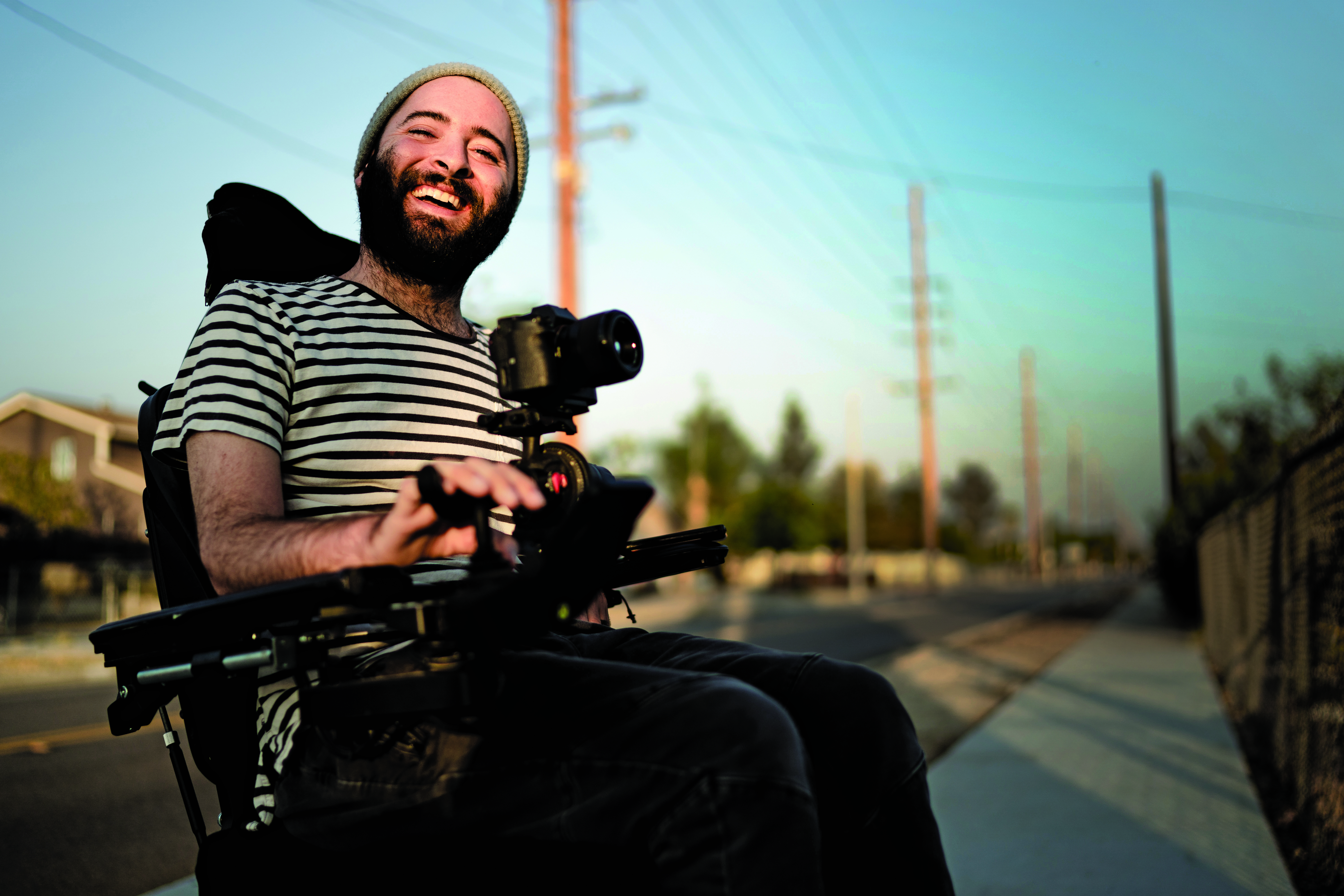
(Photo: Anthony Carbajal)
Laarne knelt on the desert floor, near the tripod beneath a Joshua tree. The trees were Anthony’s favorite metaphor; he found hope merely by staring at them, saw defiance in the way they survived.
“Joshua trees are very awkward,” he said. “Their limbs just hang there and don’t work anymore. They are very awkwardly beautiful.”
Anthony was diagnosed with amyotrophic lateral sclerosis—ALS, or Lou Gehrig’s disease—two years ago. He was booked to photograph more than 30 weddings that year, and canceled them all. He sold off some of his expensive cameras and some of the laptops he used to process his pictures; he and Laarne were culling both the professional and personal things they decided they’d no longer need. He made $600 a month from Social Security. They were still living off the donations spurred by an appearance on The Ellen DeGeneres Show, and the kindness of strangers. Their mortgage, their food, their caregiving costs—they could pay only because thousands of random people saw Anthony’s story online, and on the show, and donated $5, $10, maybe $100 each.
Recently Anthony had decided to devote his life to his work again. He was taking dozens of pictures every day—street photography—while using his wheelchair in Redlands, California. The disease, often fast and merciless, was progressing slowly in him. And his mother told him she specifically wanted him to take pictures of Joshua trees, both in the daylight and in the dark. His favorite coffee shop in Redlands, Augie’s, would soon display his pictures so he could try to sell them, with the proceeds, he hoped, going toward full-time care for his mother, Catherine Scott. She also had ALS—had been battling it for 14 years. Anthony was helping to take care of her at the time of his own diagnosis.
The last light above Anthony and Laarne went far past the rock mounds and left a small pink trace on the trees.
“Let’s get these last warm tones,” Anthony shouted to Laarne, and to their friend and roommate, Janey, who was helping move the tripod to different positions. “Hurry! The sun is moving behind the mountain. As much sky as you can get!”

Anthony woke the next morning looking forward to a cup of coffee. He looked forward to that every morning, whether Laarne or Janey made it or they went to one of the outside tables at Augie’s, just like he looked forward to receiving his wake-up kiss from his wife or walking out to the backyard and looking at the grapefruits growing in the trees, and to their two dogs, Ricky and Lucy, jumping on his lap and whimpering for his affection.
“I like to live in the present,” he said, sitting on a bench by the fire pit in the back yard of their house in Redlands, at the base of the San Bernardino Mountains, east of Los Angeles. He was smoking prescription sativa marijuana out of the only little glass bowl he hadn’t accidentally dropped and shattered. Sativa helped him focus. “About 90 percent of the time, I’m looking forward to the time I do have.”
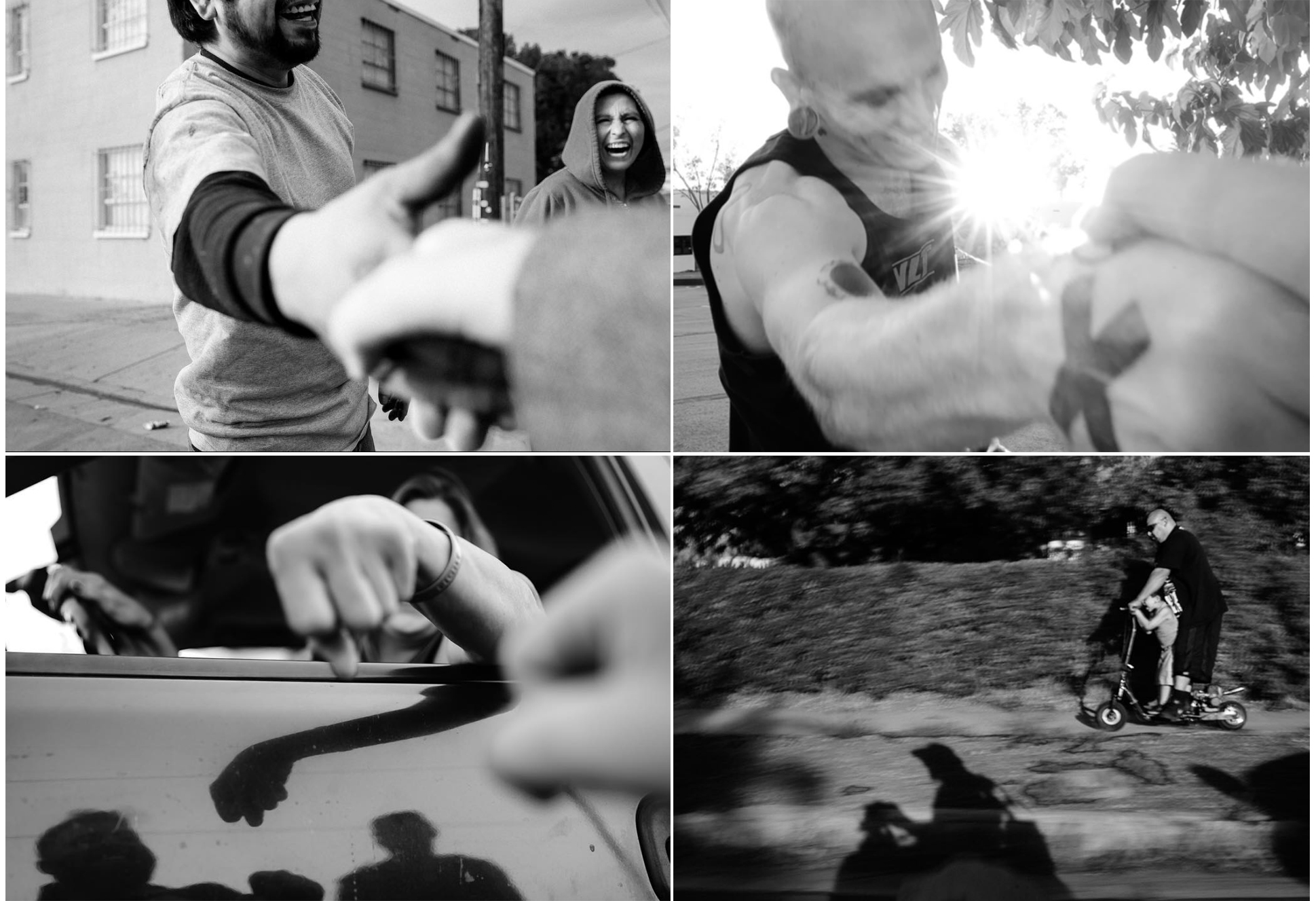
Anthony had just received a wheelchair. He wanted to ease into it, get to know it, so it wouldn’t one day overwhelm him by taking a sudden and irreversible role in his life. He drove it two miles to downtown Redlands. Driving along, looking at the mountains, upbeat and often marveling at the weather. Parking the wheelchair, getting out of it and walking—that often made for funny or awkward conversations around town. He mounted a camera on one of the armrests and rigged an easier button, so he could start taking pictures of people he met on the street.
Living in the present meant learning about his new life, learning how to hack it. Wearing a type of jeans with a drawstring that he could untie instead of a zipper. Wearing slip-on Nikes. Sticking a beer with a straw in the front pocket of his shirt. Using a lighter with a special switch that he could trigger with the touch of a finger. His Toto automated toilet, the ultimate ALS hack.

ALS is a voracious disease. It is famous for taking everything from the body, often leaving the mind alone and intact. The body’s motor neurons die and the muscles wither; the arms and legs shrivel; the feet, the neck, and the hands stop working. Eventually the ability to speak and to breathe go too. The ALS patient essentially becomes trapped. There are no real medications to allay its progression in the long term. A diagnosis doesn’t always mean a very quick and progressive death, but, on average, means about three to five years to live.
The complexity of Anthony’s specific type of ALS speaks to the complexity of the disease at large and why it’s so hard to cure. While most cases of ALS aren’t heritable, Anthony has the rarer familial version; heritable ALS accounts for only 5 to 15 percent of all ALS cases. His symptoms are owed to a change in his DNA inherited from his mother—a mutation in a gene called CHCHD10.
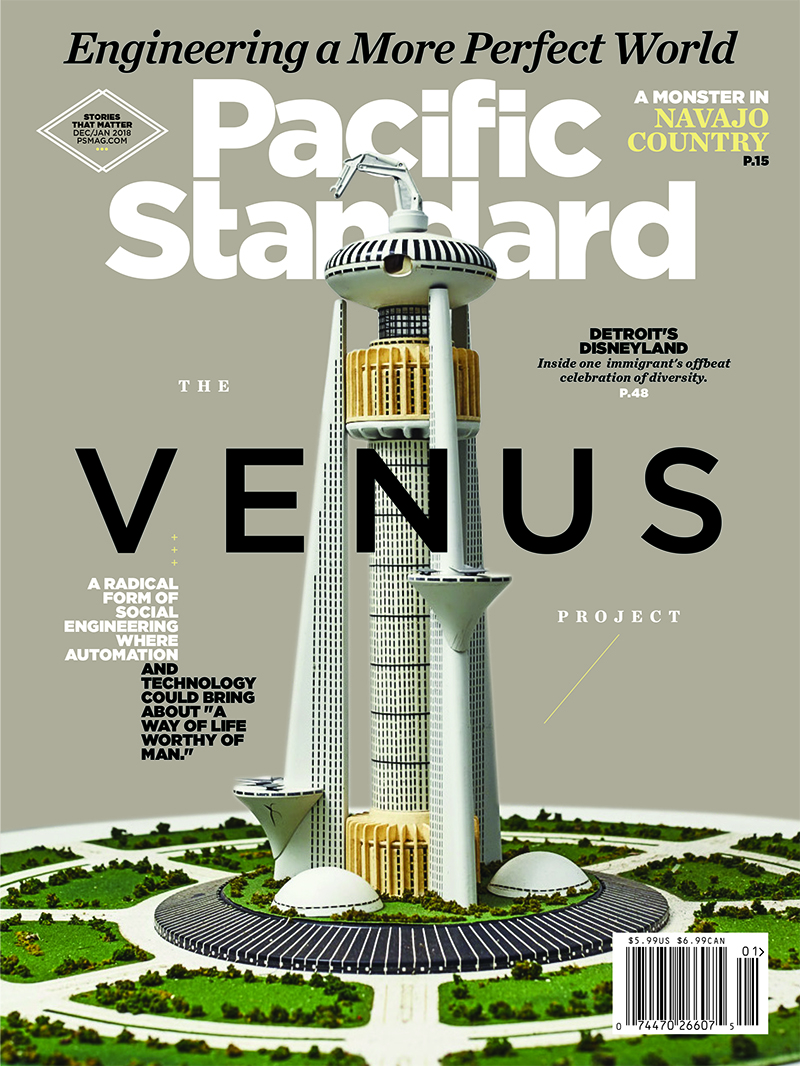
(Photo: Jarren Vink/Pacific Standard)
Short for coiled-coil-helix-coiled-coil-helix domain containing 10, a section of the genetic code for a protein that likely helps maintain the shape and organization of mitochondria—the energy producers of cells—CHCHD10 is heavily involved in the operation of skeletal muscle tissue. The mutation in Anthony’s DNA causes an error in this protein—a swap of just a few atoms: At the 15th position out of 142 in the protein, Anthony’s skeletal muscle cells make the amino acid leucine (C6H13NO2), whereas they should make arginine (C6H14N4O2). The result is ALS. Maybe.
Knowing what causes the error is still only part of the difficulty: Figuring out when it will go on to cause ALS is another matter. “The crazy thing is, other people in our family had the genetic mutation, but it never manifested,” Anthony says. “Just because you have the gene doesn’t mean it will trigger [ALS].”
“We don’t know why there’s the mutation,” says Nailah Siddique, a research nurse at Northwestern University with a master’s in neuroscience nursing who has been studying ALS and working with patients like Anthony since 1979. “We’re trying desperately to figure that out. When we started this, in 1984, we were naive enough to think all the inherited ALS was going to have the same genetic cause. That didn’t last very long.”
It’s difficult to understand why ALS affects people so differently, why it renders one person completely immobile in just two years, and why Anthony’s ALS is progressing much more slowly than average. Nobody knows why he can still walk and take pictures, though with some trouble.
Of course, Anthony said, as he sat outside his mother’s house one afternoon, he was familiar with the medical language of his own family, the letters and numbers and abbreviations. He knew that the disease could be traced far beyond his grandmother. He had read the emails from geneticists discussing DNA samples. He sent back his own emails, asking the doctors, wishfully, about any potential new treatments, anything at all that he might try. He saw the disease’s slow actualities as he lifted his hands from his lap to his face, considering the palms drooping toward him, as he leaned back in his chair and shrugged his shoulders in the sun.
Anthony became famous for how he reacted to his diagnosis—specifically, for a nearly seven-minute video he made in response to finding out he had the disease. The video began on a sunny day in August of 2014, during the height of the Ice Bucket Challenge, when people all over the world were dumping buckets of freezing water over themselves and nominating friends and relatives to do the same. If the nominated person didn’t accept, the challenge called for them to donate to the ALS Association.
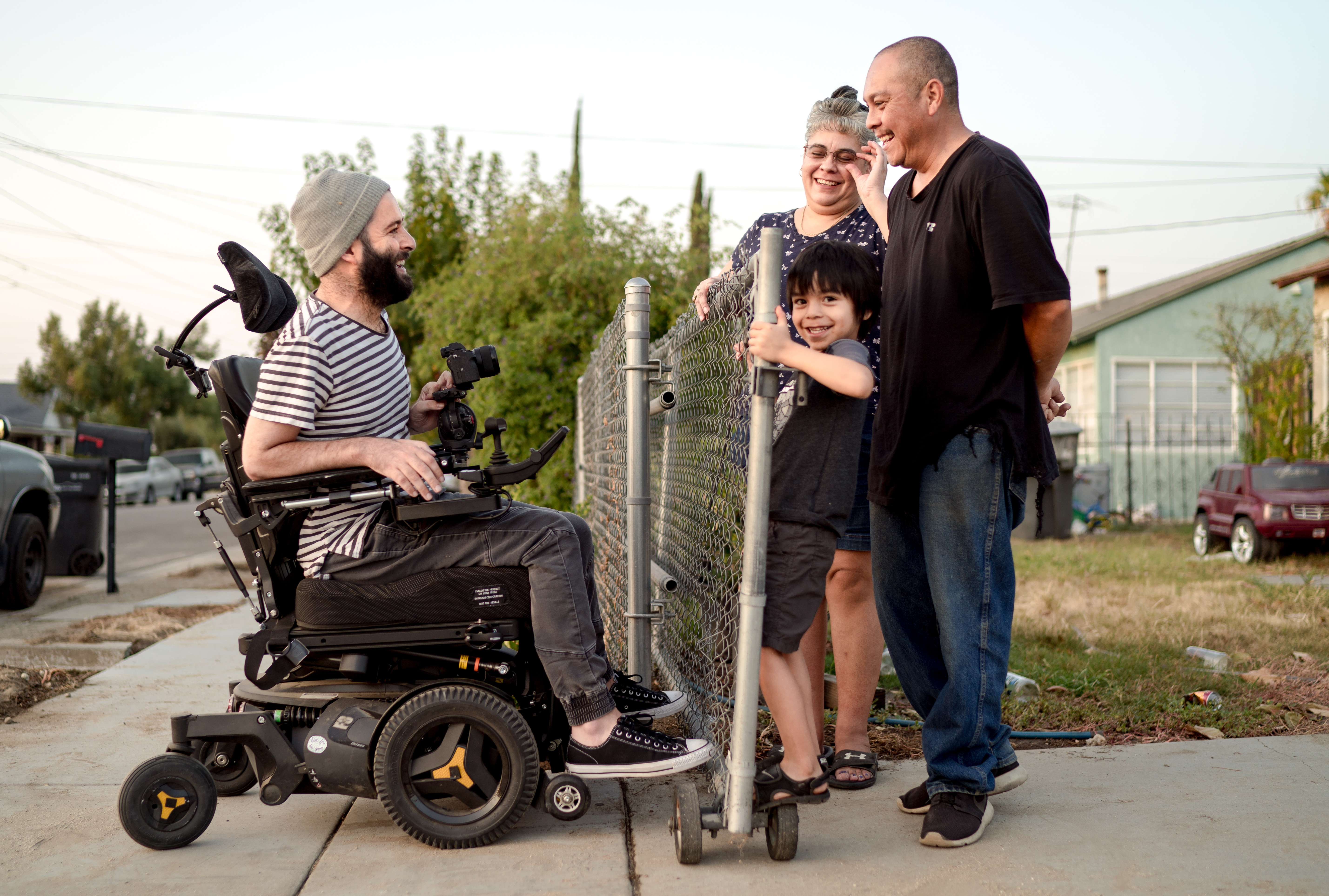
Anthony was wearing a pink bikini in the video, with the words “KISS MY ALS” written on the butt. He was washing his car, splaying himself on the hood like a buxom star, slowly pressing his hands against the car’s front windshield with the sponge, straddling the hood, sliding his hairy chest down suggestively, laughing. He sprayed himself with a water hose and wiped the back window of his car, pressing “KISS MY ALS” against the glass back and forth. He nominated Ellen DeGeneres to accept the challenge, and then yelled, “Let’s do this!” as a cooler full of ice water was dumped on him while he giggled. The video then changed tone.
A new frame showed him dry, inside his and Laarne’s house, facing the camera.
“I have been so terrified of ALS my entire life, because it runs in my family,” he said. He began rubbing his eyes. He walked away from the camera, weeping. “My grandmother had it. She was a second mother to me. My mother was diagnosed when I was in high school. Five months ago I was diagnosed at 26 years old. ALS is so, so, fucking scary, you have no idea….” He pressed his atrophying hands against his eyes, sobbing, gasping. The video cut to footage of him lifting his mother’s body out of her bed, putting on her oxygen mask. “I really hate talking about it. That’s probably why nobody talks about it. Because it’s so challenging to watch. It’s so challenging to see, and to talk about. … Right now, the ALS community has the main spotlight. … Only 30,000 people in the U.S. have ALS,” he added. “If I simply dump ice on my head, I don’t think you’re going to get the point. Thank you for sharing this video in advance.”
More than 15 million people watched. Ellen eventually saw it, and invited him on the show. She answered his call and took the Ice Bucket Challenge, but did it with him, standing on stage, holding his hand. They both squealed.
“Anthony, you are the coolest guy,” she said. “And do you know how much attention you are raising for ALS?”
“This doesn’t feel real,” he responded.
His mom was in the audience.
“This is probably the best day of [our lives].”
“I know how this disease progresses,” he went on. “I think my perspective has changed a little bit. I’m living a little bit more, honestly. It’s definitely a challenging diagnosis, but our family has never been closer, and the important things in life have never been clearer. And I want to use the strength I have today to live it to the fullest.”
Ellen handed Anthony a bucket of money: $25,000 from the Internet photo company Shutterfly, to the ALS Therapy Development Institute he was promoting. The crowd roared. Another bucket of $25,000 for the institute. “I know you had to stop working recently,” Ellen said. “So there’s $25,000 for you. … And another $25,000 for you.”

He had been adept at using his hands. He had been creative with them, a type of artist, and not just behind the camera. When Anthony talked about losing his hands—his fingers were curling in on themselves now while he slept, and he would have to pry them straight in the morning—he sounded more wistful and bittersweet than heartbroken or angry. He also loved to draw, and paint, and was a flashy card dealer—one of the first indications that he had the disease was when he realized his fingers no longer had the strength to shuffle a deck. He had practiced yo-yo for hours, to the point where he could do advanced tricks. Before his diagnosis, he was making up to $6,000 a wedding.
The morning he found out he had ALS, after a long and painful EMG test, he thought: I can’t believe this is happening. I can’t believe this is real life. “For the first time in my life,” he says, “I just felt like, This is not fair.”
Before he received his own diagnosis, Anthony lived with his mom in the same two-story house. He helped his stepdad, Don, and his step-grandmother care for her. His job as a photographer offered him the time he needed to be there. He fluffed his mom’s pillow, fed her juice, and moved her softly out of bed from pillow to wheelchair. She was diagnosed shortly after changing jobs, and while she was caring for her own mother, Marie Doran, who also had ALS. She thought she had carpal tunnel syndrome. She raised Anthony and his sister while working constantly. Back when his grandmother was still alive, Anthony remembered using his hands on her steering wheel when her own hands were too weak to drive.
Catherine was 45, and could still stand, but only for five minutes at a time. She still had minute power over the muscles that allowed her to speak; she could whisper, but it was hard to understand her above the drone of her breathing apparatus. She was in bed when Anthony visited her in February of 2016, with the large television on the wall playing the Super Bowl pre-game show. Her small shoulders were motionless but her legs shifted underneath a white blanket. Her head was propped on some pillows and she was staring, through glasses, at the TV screen. She was smiling at all the visitors. Anthony kissed her on the forehead, then knelt with Laarne at the foot of the bed.
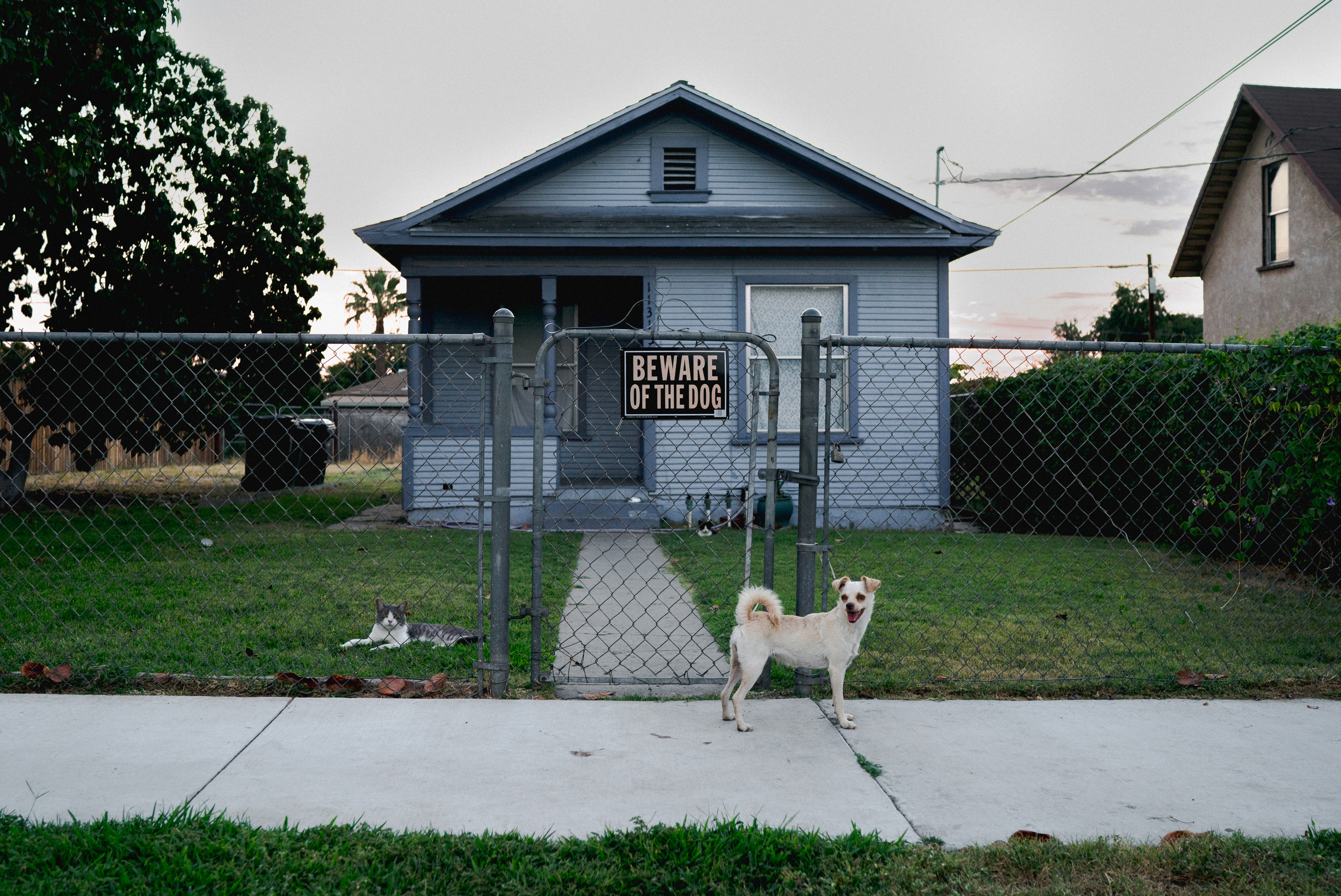
Anthony started a fundraiser on Facebook, “Please Help Us Keep Our Mom at Home,” to try and get $46,000 for the long-term caregiver she’d need. Anthony was not living with her anymore, and his step-grandmother was leaving the house and moving to Vegas. Catherine also started a petition, “Improve Home Care for ALS Patients Immediately,” aimed at the ALS Association, asking it to address what she described as a miscommunication as well as a knowledge deficit of the home health services options available through insurance programs, including Medicare, for ALS patients. She was deciding if she wanted to keep living—if she wanted to get a tracheotomy, which would breathe for her. She ultimately decided to.
It was a disease that was still frustrating in its lack of awareness, one still many people didn’t know about, and even fewer understood, and having experienced it through three generations of the same family, the Carbajals felt they understood its mysteries as well as anyone.
Catherine posted a lot, mostly on Facebook, not just about various causes and about the disease, but about her own life and what she was thankful for.
“Time, I desperately wanted more time,” she wrote at the end of 2016. “I married the most incredible human being, and together we built a loving and supportive home. My disease progressed slowly, and I saw my children grow into adults. I feel so blessed and grateful for that. … I thank God for all of the love and beauty I’ve had in my 45 years … and for all of the difficult situations and hardships I’ve had, too. They’ve given my life depth and meaning, and have made it so much more precious.”

That was a window into the future, even if Anthony was thinking in the now. The blanket and the bed; the breathing apparatus and then the trach tube; the wheelchair; the mechanical lift attached to the railing system on the stairwell in his mother’s house that cost as much to install as buying a car. A window into the type of care he would need if a cure isn’t found, care that Laarne would not be able to provide for him by herself, care beyond what the $600 a month from Medicare could provide. Even if Janey was living with them, and even if their caretaker was coming four days a week and helping Anthony eat and get ready.
Anthony and Laarne were married after he learned of his diagnosis. He had already visited her extended family in the South Philippines, where they fell in love with him. They called him “An-TOE-nee.” Her grandmother, in the little house without water and air conditioning where she grew up, asked: “An-TOE-nee, do you love Laarne?” They had only been dating a few months. When he responded “Yes,” that was the first time she knew. The ceremony was at Back to the Grind in Riverside, California, the coffee shop where they had their first date. When they were looking at each other during the ceremony, they were both thinking about the road ahead. They thanked each other for the gift of their companionship, and thanked their parents. Laarne was afraid her mother and father would not want her to stay with Anthony after he was diagnosed.
“But what really gave me encouragement was when my dad said: ‘You don’t leave. You love the guy because of his heart, not because of his strength,'” Laarne said. “He told me: ‘Don’t even consider leaving him. This is when he needs you the most.'”
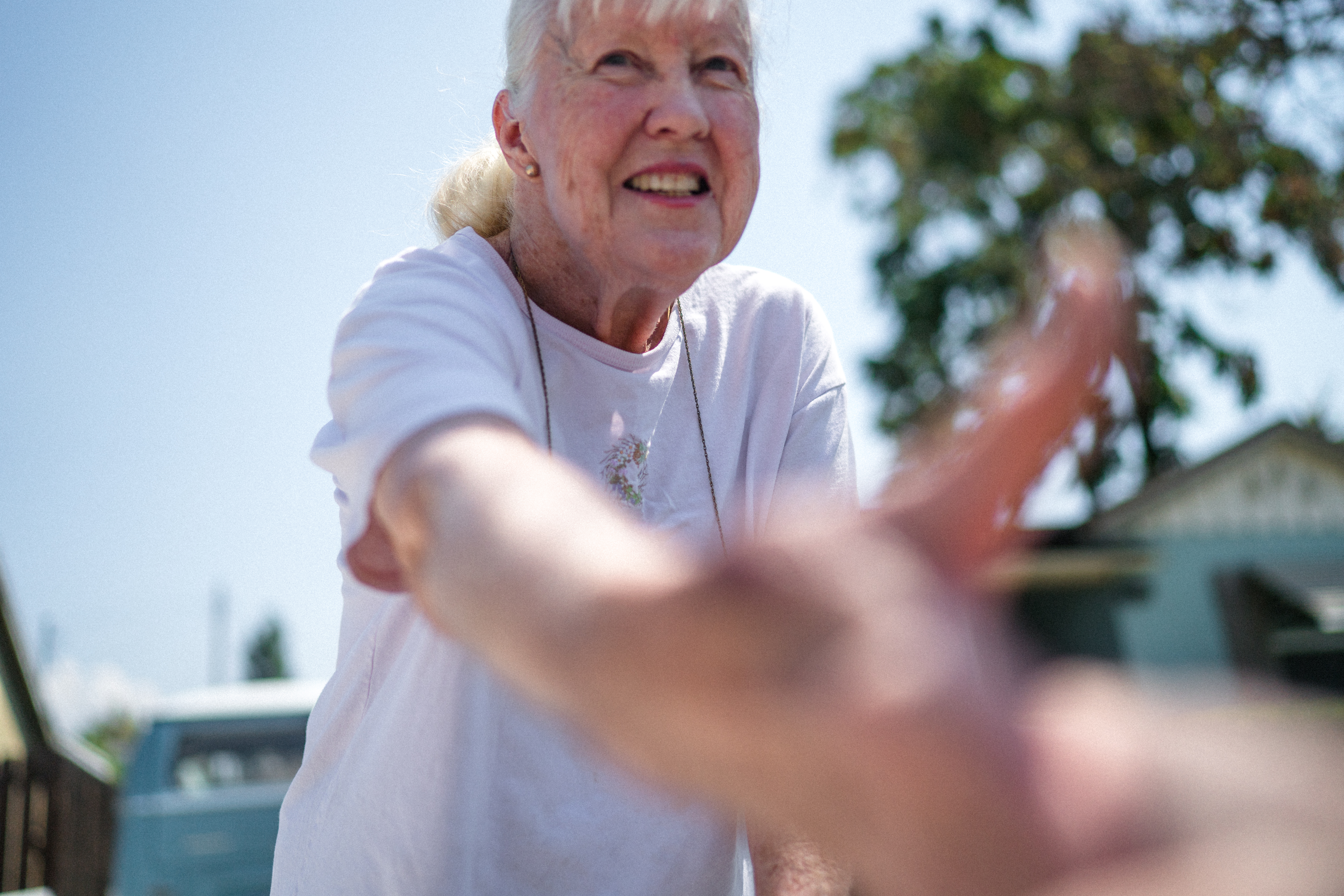
They used some of the Ellen money to remodel the house they purchased in Redlands. To make the entryways wider and wheelchair accessible. To rip out the carpet and leave the floors concrete—easier for wheelchairs. They wanted a normal, married life, for as long as they could have it. This past year they learned that they were so careful about protecting each other, to really be able to do this, that they had to verbalize how crummy they felt, how tired; that they occasionally needed space. “I shouldn’t be complaining, because my husband has ALS,” Laarne said.
Anthony went outside into the backyard with his camera and set up the tripod by an olive tree. Something about the light captivated him again. He rigged a system to be able to take pictures of the sky, and his rigs were constantly evolving as his disease progressed. He wanted to optimize his wheelchair so he could always take pictures. He stood above it, fiddling with a makeshift camera holster.
“I see my mom live a happy, fulfilling life. If my mom can do that, I can too,” he said. “I have a lot of abilities still. Just the fact I’m alive. And here. And doing photography. I think that’s why life is beautiful. You have to value those small moments that aren’t going to last forever.”
Laarne was his hands now, and he directed her in the backyard as he did in the desert. They were sitting in front of the tree, the dogs were out, the grapefruits littering the yard; he asked her to change the shutter speed on the camera. It was late in the afternoon. The light was perfect, but it wouldn’t last forever.
A version of this story originally appeared in the December/January 2018 issue of Pacific Standard.





